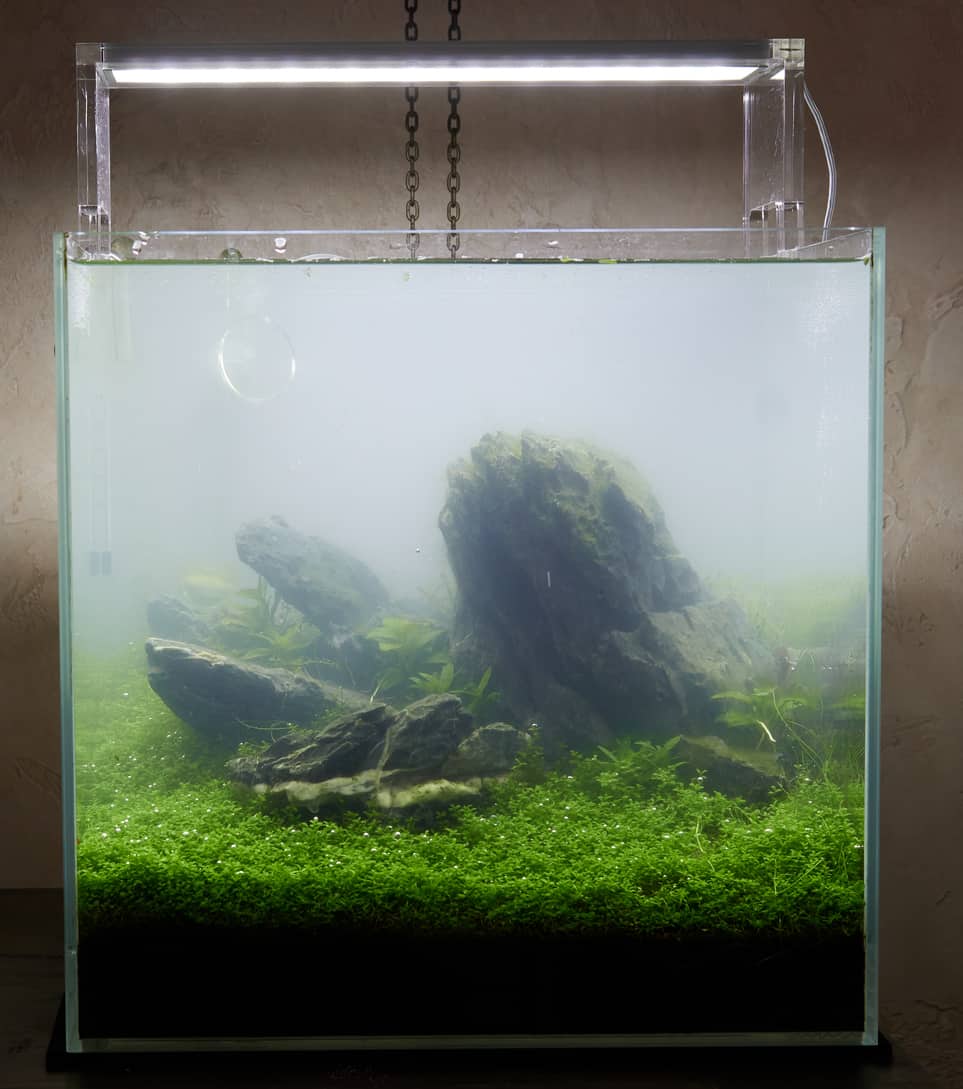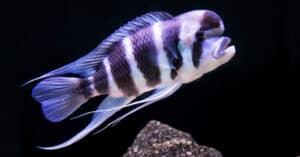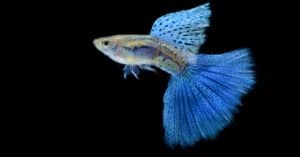Yes. It is normal to see cloudy water on Day 1 in your fish tank after water is first added. Bacteria bloom (cloudy water) will clear up. Water takes 2 days to a couple of weeks to clear up on its own. Add in some gravel as well. Good bacteria will develop with adding gravel. To speed up the clearing process take a handful of gravel from an already set up tank if available. It takes 4-6 weeks for the good bacteria to grow completely.
What type of imbalances causes cloudy water?
Cloudy water is evidence of an imbalance between the beneficial bacteria (that digests waste) and waste. Water with a high concentration of Ammonia and Nitrite needs to be treated before you can add fish. Let the tank run for a day or two and test the pH, hardness, alkalinity, ammonia, nitrite, and nitrate levels for a baseline record. Add activated carbon to help clear the water and adsorb nutrients that feed the bacteria bloom.
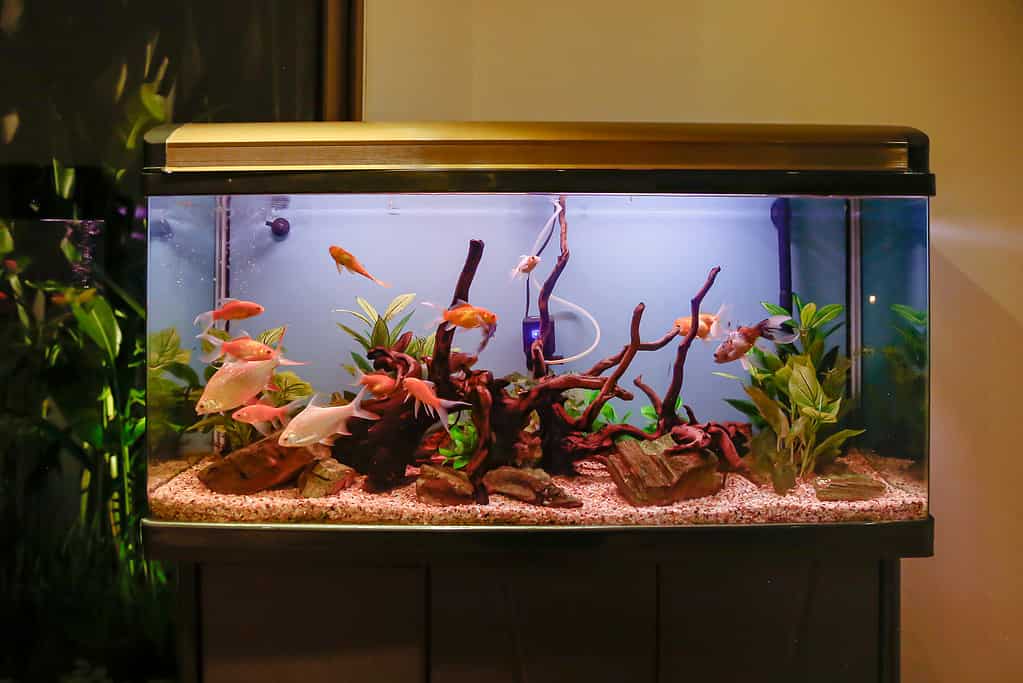
A clear and balanced fish tank is your goal.
©iStock.com/Kanawa_Studio
pH 101 and Fish Tanks
Correct pH levels vary depending on the type of fish you want to keep. Freshwater fish are generally safe in a 6.5 to 7.5 pH range. Saltwater fish usually are upwards of 8pH. Make sure to test your water before you add any fish.
How else can I clear the cloudy water more quickly?
The nitrogen cycle needs to work through the tank. Introduce bottled bacteria and water from an established tank from the fish store. The nitrogen cycle is complete after 24 hours. It will take 24 hours for the chemicals to eliminate chlorine and bacteria. The ammonia and nitrates are now at a healthy level for fish to live in at this point.

Make sure the tank is clean before adding water.
©iStock.com/DonNichols
How should I clean my fish tank before filling it up with water?
Wash the fish tank out with hot water. Pre-wash the gravel as well. When buying a fish tank second-hand (especially if it had been used as a salt-water tank) may have algae and calcium deposits that hot water will not be able to wash off. Use non-iodized salt and a razor to scrape off algae and calcium deposits that don’t come off with just hot water. Calcium deposits could precipitate cloudy water if it is at a high level as well as any unwashed gravel. If it is just bacteria bloom (cloudy water) will clear itself in a day or two. Remember not to use any chemicals inside the fish tank while cleaning it.
Can I test my cloudy water?
Test your water using Ammonia Test Strips and Multi-Test strips to make sure the ammonia, nitrite, and nitrate levels are not too high. Make sure to check water with test strips daily, until water clears up and the water is in balance.
Can I add fish after 24 hours even if my water is still cloudy?
Existing fish can be added as long as the tank is tested as balanced. Cloudy water will not be a detriment to fish added into a cloudy tank. Do not add more fish until the cloudy water is clear. Until the water is clear, it is suggested to feed the fish sparingly once every other day. Keep up with the water testing regimen. Cloudy water could persist after fish are added as a result of the effects of fish waste. If the ammonia or nitrite levels get too high, the water may become toxic, making your pet fish ill or die. Add aquarium chemicals to the tank as necessary. After the water is clear and balanced more fish can be safely added.
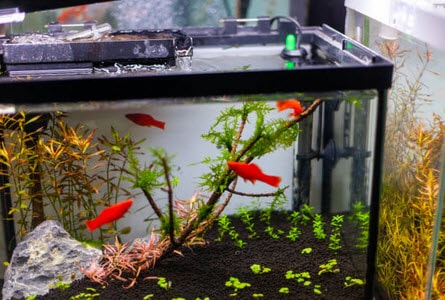
A clear fish tank with a balanced system.
©iStock.com/niuniu
Water to use in my fish tank
The type of water used in the fish tank and how often you change it is important, and directly relevant to the fish’s health and extra chemicals that may be needed. There are three main water options available to most tank owners:
- Well Water – As long as the water is clear and free of heavy metals and toxic chemicals it should be fine.
- City Water – Most municipalities treat drinking water with either chlorine or chloramine for disinfection purposes. Pre-treat water quickly with a liquid water conditioner.
- Bottled Water – If using bottled water use “Spring” water and not “distilled” water. All the beneficial buffers have been removed from distilled water which is not good for fish. The best bottled water for fish tanks is usually “Spring” water.
What is “New Tank Syndrome”?
Are you concerned about “new tank syndrome”? If you notice added fish acting sickly or not leaving the bottom of the tank, it could mean the nitrite level could be very high. Nitrite is very toxic for fish, and can be fatal in higher amounts. Make sure to test the water at your local pet store if needed.
Thank you for reading! Have some feedback for us? Contact the AZ Animals editorial team.

